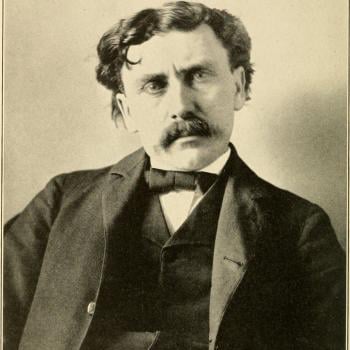The excellent scholar Crawford Gribben has an ambitious new book out on The Rise and Fall of Christian Ireland (Oxford University Press, 2021). Crawford has kindly agreed to write a post arising from his work.
The Death Of Christian Ireland – And Its Resurrection?
By Crawford Gribben
Over the last 30 years, Irish culture has rapidly secularised. Religious identities and practices that were 1500 years in the making have suddenly disappeared – and few people seem to miss them.
Yet Ireland’s debt to Christianity is considerable. The church that was established by Palladius, Patrick, Columba and a host of other saints established monasteries, which provided for education and healthcare. As the western Roman Empire collapsed around them, these institutions did much to preserve the achieve achievements of European civilisation. Irish monks discovered the world, establishing foundations in the Hebrides, Shetland, Faroe, and Iceland, where they made a home long before the arrival of the earliest Vikings. Setting out in coracles and trusting themselves to the mercy of God and the wild Atlantic, they began a campaign of pilgrimage and proclamation that led in turn to the conversion of the Picts, the Northumbrians, the Anglo-Saxons, and other European peoples. Along the way, they produced such iconic artefacts as the Book of Kells. Now recognised as an outstanding example of the “insular aesthetic,” or as something that tourists regard as being authentically Irish, the Book of Kells reveals influences that stretch across Christendom. These were the achievements of a confident Christian community. Recognising the authority of the papacy while resisting its agendas, the Irish church remained committed for several centuries to a liturgy and to monastic federations that were distinctive within the wider European church. And this was a Christian community that was willing to critique political, as well as religious, power. For in the 12th century, while the Norman invaders set up systems that policed the distinctions between English speakers and Gaels, in a medieval version of apartheid, the structures of the church defied these social divisions to promote a different ideal of community, the boundaries of which were determined by fealty to Jesus Christ.
The Irish church was always idiosyncratic. In the 12th century, the Norman effort to introduce the Gregorian reformation – an effort to “normalise” the Irish church according to European standards – largely failed. Irish priests had wives and families until the 16th century, when the pressures associated with Protestant Reformation finally made the Irish church fully Catholic. But, as the Protestant Reformation also failed, Irish Catholics found in their religious community a set of alternative institutions that provided for the formation of a distinctive national identity, the contours of which shaped political and cultural endeavours until the later part of the 20th century. Irish Protestants, meanwhile, developed an alternative religious nationalism, in which competing denominations were eventually united through a spectacular religious revival in 1859 and in the formation of Unionist politics during the home-rule crisis that began in the 1880s.
The competition between these competing varieties of religious nationalism was resolved in the early 1920s with a result that neither nationalists nor unionists wanted. After the partition of the island, in 1922, the southern state fashioned itself as a truly Christian national community, with, after 1937, a constitution that recognised the special status of the Catholic Church. Taking advantage of this opportunity, the Church provided the state with key institutions in education and healthcare, as generations of Irish sons and daughters were directed into the priesthood and religious orders, staffing the Church worldwide. In Northern Ireland, meanwhile, the Protestant politicians who dominated the devolved Stormont parliament never recognised the special status of any denomination, but presided over a distinctive culture that prioritised protestant interests. While Northern Ireland remained more obviously religiously mixed than its southern neighbour, the two jurisdictions supported what were in many respects parallel projects in religious nationalism. On both sides of the border, the Christian churches supported cultures that were deeply conservative, even reactionary, with shared ethical and moral concerns, that were increasingly out of step with experiences of secularisation elsewhere.
But the cultures of Ireland and Northern Ireland have suddenly caught up with the pace of European social change. In the year that marks the centenary of partition, the religious cultures that sustained the formation of these rival jurisdictions are rapidly disappearing. South of the border, successive referenda have demonstrated that the children of a republic that was shaped in profound ways by Catholic values are only too happy to see many of those values disappear – a response that has been warranted by several decades of increasingly horrific revelations of clerical abuse. North of the border, census returns suggest that the category of religious non-belief is growing fastest in traditionally Protestant areas. In neither jurisdiction is there any evidence that the recent liberalisation of marriage laws or the legalisation and widening of access to abortion is likely to be reversed. Some denominations welcome the social changes, while by others they are lamented. But in both progressive and conservative camps, church attendance continues to decline, even among those religious communities most committed to evangelisation.
In the year that marks the 1500th anniversary of the birth of Saint Columba and the centenary of partition, the cultures that once characterised Christian Ireland seem to be beyond recovery. And very few people seem to miss them.















